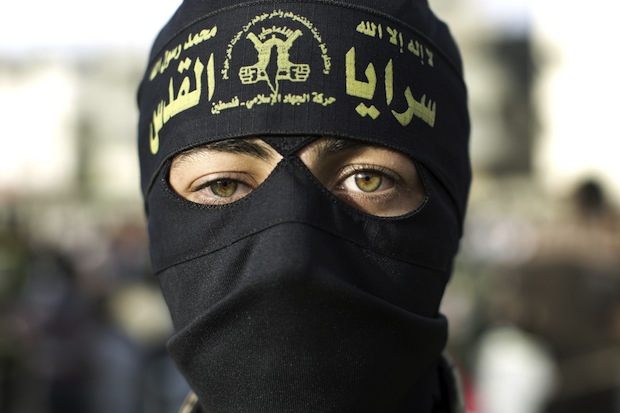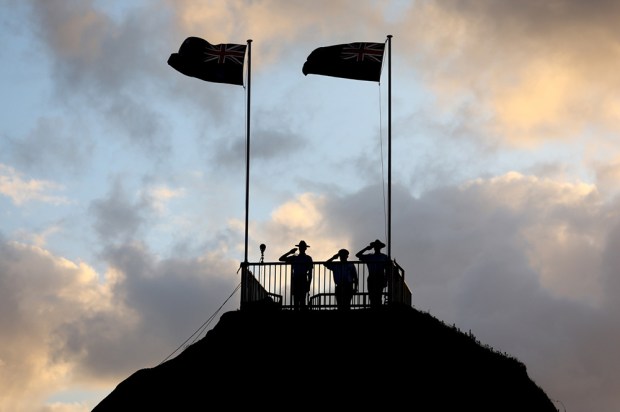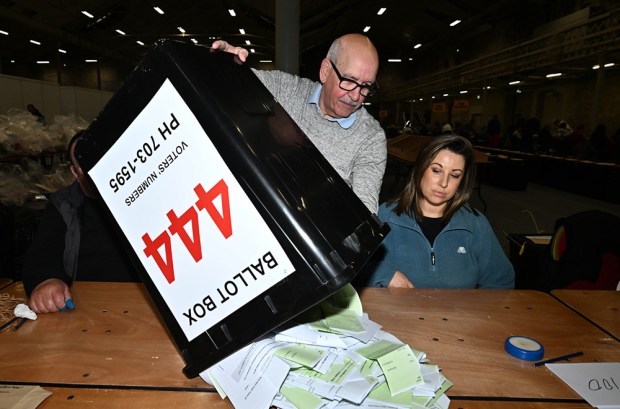Last August, full of piss, vinegar, and youthful enthusiasm, I wrote a piece in this publication entitled ‘Smash the Islamic State’, which argued for a cohesive and forceful response to the Islamic State’s so-called khilafah. Aside from my disappointment that the headline was never co-opted into a Coalition soundbite slogan, it seems, given we’ve passed the anniversary of the caliphate’s establishment, that the campaign has been an abject failure.
In that piece, I invoked Irving Kristol’s remark that neoconservatives were liberals who’d been mugged by reality to criticise the neocon Mesopotamia misadventure that began in 2003. I argued that this intervention would be different: military action rather than trillion dollar social engineering, and that leaving the battle to Iran and its proxies would only serve Tehran’s geopolitical ambitions, and cede far too much influence.
To clarify: since Isis’s rapid annexation of territory in Iraq last year, events on the ground have skipped to and fro: Isis moved from the indefatigable upstart whose offensive, in more hyperbolic commentary, threatened the continued survival of the Iraqi government in Baghdad, before moving to a largely defensive posture this year as it fights battles on multiple fronts, all while contending with US-led airstrikes. The switching of posture by Isis is seen by some as evidence of the US-led campaign’s effectiveness. This is a view I don’t share.
The root causes that have led to Isis’s success in Iraq have not only been ignored, they’ve been made substantially worse. Many of Iraq’s disenfranchised Sunnis still view Isis as preferable to the Shia-dominated government in Baghdad, a state of affairs that began with the de-Baathification of the Iraqi Army after the overthrow of Saddam Hussein.
In the campaign to liberate Tikrit from Isis forces, the considerable presence of Iranian-led Shiite militias saw numerable atrocities straight out of the Isis playbook and looting, with Sunnis refusing to return to their homes until Shia militias had left. To date, Isis have still only made notable gains in Iraq in areas dominated by Sunnis, including the recently captured city of Ramadi.
Masterfully captured by Fred Kaplan in The Insurgents, the worst parts of the pre-surge violence in Iraq happened at the behest of Iranian-led militias: policemen functioning as Shia deathsquads in broad daylight; Shia doctors murdering Sunni patients in emergency wards. It’s no wonder that Sunnis in the region view the US as a patron of Shiite power. The expansion of Tehran’s influence in Baghdad is at a point not seen since the Treaty of Zuhab in the 17th century. Recently I noted that in Baghdad’s Firdaus Square, where a colossal effigy of Saddam Hussein had once stood, a statue of Iran’s first Supreme Leader, Ayatollah Khomeini, has taken its place. On the frontlines of Tikrit, Major-General Qassem Soleimani sipped tea and posed for selfies with Shiite fighters. The US, in the end, acted, as it has elsewhere, as their de facto airforce.
Some see that the failure of the Iraqi Security Forces to defend territory such as Mosul, Tikrit, or Ramadi as the reason that Shiite militias have been relied upon by Iraq’s Prime Minister Haider al-Abadi. Iraq must fight with the army it has (or lack thereof), they argue.
In War on the Rocks, Douglas Ollivant provides an alternative explanation. Given that the idea of US battalions on the ground is simply not going to happen, the US has only one option on the ground: enabling partner forces. There was a catastrophic failure to equip Iraqi troops in Ramadi, troops that had been fighting Isis and associated militias for 18 months. Isis’s deployment of car (or truck) bombs with suicide drivers – Suicide Vehicle-Borne Improvised Explosive Devices, or SVBIEDs, one of their favourite tactics – is countered with an anti-tank missile, which Iraqi forces weren’t supplied with.
In Ollivant’s words: ‘…the proper defensive tactic against an SVBIED is an anti-tank missile… even the US Army or Marines — faced with multiple SVBIEDs, and lacking any ability to defend against them would likely break and withdraw, regardless of their numerical superiority.’ Bluntly stated: the US has no coherent strategy to deal with this expansion of Iranian power. In somewhat better news, Kurdish forces in Syria routed Isis forces last week in the key Syrian border town of Tal Abyad, putting them 50km outside the caliphate’s capital of Raqqa. The Kurds in Syria give IS something they haven’t yet seen: an aggressive, capable, and courageous rebel group bent on its defeat. Such was the importance of Tal Abyad’s loss that the group were forced to acknowledge it in a Ramadan broadcast.
Slightly uplifting, for a time, was the news of the possible deaths of Australia’s two most infamous jihadis, Khaled Sharrouf and Mohamed Elomar. However, reports have surfaced that, while Elomar appears to have been killed, Sharrouf faked his own death in order to get his family back to Australia. Both men have been responsible for war-crimes and implicated in sex slavery. No-one needs reminding of the grisly image of Sharrouf’s son holding a severed head in front of his smiling father. By all accounts, Sharrouf and Elomar were popular among Australian sympathisers to Isis, and implicated in the enslavement of Yazidi women.
Any evaluation of Isis’s anniversary must take the latter into account: the group rely on a narrative of continual expansion and victory. Even when the group lose territory, as we’ve seen in Tikrit and Kobane, they counter losses with new ‘victories’, whether that means the amalgamation of other jihadist groups, like Boko Haram, or last week’s raid on Kobane. It serves their propaganda efforts, giving the appearance of momentum and strength, perhaps the most vital part of its recruitment strategy, pace the jihadi old guards of al Qaeda. Expansion into Libya relieves pressure the group may be feeling in Syria and Iraq. The trifecta of Isis-linked terror attacks in France, Tunisia and Kuwait last week feed into the same public relations strategy.
Incidentally, Isis lost control of their key Libyan stronghold in Derna last week, when tensions with a local Islamist group, Abu Salim Martyrs Brigade, erupted into a full-blown conflict, with anti-Isis forces clearing Isis from the city’s centre, and capturing their headquarters. Note how the media narrative has focused on Isis-linked terror attacks.
So, how are Isis doing overall? The group are unlikely to collapse in the medium-term, but they’re certainly not winning. The problem, of course, is how the West will look after the dust has settled. Will the US position in the region be stronger, or less so? At this current assessment, far, far weaker.
Got something to add? Join the discussion and comment below.
Get 10 issues for just $10
Subscribe to The Spectator Australia today for the next 10 magazine issues, plus full online access, for just $10.
You might disagree with half of it, but you’ll enjoy reading all of it. Try your first month for free, then just $2 a week for the remainder of your first year.













Comments
Don't miss out
Join the conversation with other Spectator Australia readers. Subscribe to leave a comment.
SUBSCRIBEAlready a subscriber? Log in